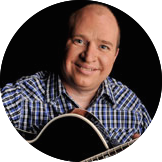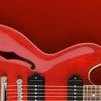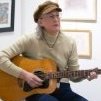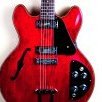-
Posts
162 -
Joined
-
Last visited
-
Days Won
5
Content Type
Profiles
Forums
Gallery
Events
Articles
Blogs
Downloads
Community Map
Everything posted by Cindy
-
To celebrate our new home, if anyone is interested in submitting a song (or more than one) that will be recorded onto a disc, please consider joining in. The disc will be sent to Steve to commemorate this fantastic Guitar Gathering Forum. For those who are new GG members, here is a link to the old forum with previously submitted songs. This should give you an idea of what we've been doing: https://community.learnandmaster.com/index.php?/topic/35101-songs-from-2016-birthday-cd/ No one needs to play perfectly. This isn't a contest. It's simply a way for us to give back to Steve for what he's been doing. Since there are bots that search online for email addresses, I am going to write out the address this way. Be sure to write it correctly when submitting your songs. Please email MP3's (not wav or other formats) to: Gathering mp3 at comcast dot net Thanks for any consideration! And @Steve Krenz please feel free to submit your own recording. No reason why Steve shouldn't get to join in on the fun! EDIT: The cutoff date for submissions is Saturday, April 21, 2018. Here in the USA, our income tax day is April 15th, so the submission date is after that in hopes of getting as much participation as possible.
-

My Grandaughter's Birthday Guitar (from PatIam)
Cindy replied to matonanjin's topic in Guitar Open Talk
Ron, I sincerely hope you will update this from time to time. Personally I find this thread to be one of the most fascinating on the forum for two reasons. I have my own heartwarming memories of wonderful times shared with my grandparents (who sadly have been gone for many, many years). So from both your perspective as a grandparent and from her perspective as a grandchild, you will wind up with some amazing cherished memories to look back upon. Secondly it was pointed out on the last forum about the benefits music has on the brain. Supposedly there is a 5% increase in the cerebellum due to learning music which translates to a higher IQ. Looking forward to hearing about your musical adventures with your granddaughter! -

Entry Level Nylon String Guitar
Cindy replied to rkl312's topic in Guitar Gear, Amps, Effects, Pedals
We used to have a member named Stargazer55 who owned a Yamaha nylon string guitar. Sadly he (Tom) passed, but he said many times how much he enjoyed playing it. The nice thing is many nylon string guitars tend to be a little smaller which makes them easier to hold--and possibly may allow them to be grabbed for a quickie session because of their comfortable size. I really don't think you'd go wrong with one providing it was properly set up. Good luck with whatever you choose! -
Mike, I find the idea of bluetooth notifications to be quite novel but am not sure about the Planet Waves one. Have you ever tried the Boveda Smart Sensor or know anyone who uses it? I really like their humidity packs and would consider staying with that brand. https://bovedainc.com/new-boveda-smart-sensor/?keyword_session_id=vt~adwords|kt~%2Bhygrometer|mt~b|ta~240241256623&_vsrefdom=wordstream&gclid=EAIaIQobChMI4dqxo4bp2AIV0brACh2RygH_EAAYASAAEgJKo_D_BwE And here's more info on their bluetooth app: https://bovedainc.com/app/
-

My Grandaughter's Birthday Guitar (from PatIam)
Cindy replied to matonanjin's topic in Guitar Open Talk
She looks so sweet...and the guitar fits here so well! What a great way to spend quality time together, too. -
Oh my gosh! You jogged my memory! When I initially read the first post, I completely forgot about Capo's Rule of Seven (Capo was an active member of LMG many years ago). I found the PDF on Mike's site which I uploaded almost 9 years ago! Major brain freeze here because I totally forgot about it! It really helps with learning the key signatures but should also help people construct scales once they learn the keys with up to 3 sharps and 3 flats. The rest is very easy. Capo's Rule of Seven.pdf
-
Nice site, Doug!
-
The explanation end of it to help you understand why you will encounter these types of chords is it's an Ab major chord in first inversion. An Ab chord is made up of the notes AbCEb. Initially the chords we learn such as C, G, D, A, etc have the root of the chord as the lowest sounding note. When a chord is in its first inversion, it means the 3rd of the chord (the C in your example) is now the lowest sounding note. So it is written as Ab/C An Ab chord in second inversion would be written as Ab/Eb meaning the Eb is the lowest sounding note. And if we are dealing with an Ab7 chord, there are a few times when you might see the chord in its third inversion which would have the 7th as the lowest sounding note...ie Ab/Gb. It's very weak to use the 7th as the lowest sounding note, but you might still encounter chords in their third inversion once in a while. The reason why we use chords in first, second, and third inversions is to create a smooth sounding bass line in the music. If we didn't, when jumping around between chords such as C-G-C, the bass can sound choppy. If we use the G chord in its first inversion, the bass line would sound as C-B-C (written as C G/B C).
-
We have to run the heater throughout the winter so it's always extremely dry in the house. I use case & soundhole humidifiers. Originally I started out with Humidipaks but now use the Boveda refills that fit inside the pouches. Boveda used to use the word humidipak in their advertising. Looks like they've removed that specific term now. They work the same as the original Humidipak replacements. And I use a case hygrometer--a Caliber IV Digital Hygromter by Western Humidor. I leave one in each compartment of the guitar cases.
-
Only the Original LMG course (created before the Bonus Workshops) had jam-along CD's. Originally there were the 20 sessions, DVDs for those sessions, and jam-along CD's for those original songs. Later Steve added the Bonus Workbook and Bonus DVDs, but he never made recordings of the Bonus material songs. If you go over to this other thread, you will find the original PDF of song speeds as well as an mp3 of Turkey in the Straw created by Dennis C for the LMG forum.
-
None of the songs in the Bonus Workshop had play-along CD's. When Steve created the original course, it contained the original book, 20 videos (on 10 DVD discs) to go with each of the 20 original sessions, and the jam-along CDs. He later added the Bonus Workshop book and additional 10 Bonus DVDs to accompany the original material but no jam-along CDs were recorded. Attached is the original list of BPM's. Some of the BPM's fell between my metronome's markings which is why they are listed with a range rather than a specific set speed. Both this PDF as well as the mp3 of Turkey in the Straw are available via MikeM's file sharing site that is linked in my signature. Back then, Dennis created a jam-along song for Turkey in the Straw. It's a slow to medium speed version (don't have a metronome right here to check its speed). It starts out with both the melody and backing track then the second time through is backing track only. I still chuckle when I hear this song--Dennis did a fantastic job making this mp3! I wasn't able to log into my Soundcloud account for LMG so created a new one. This will also be where I link forum submissions for future CDs. LMG BPMs for Jam Along CDs.pdf
-

Who is your favorite guitar manufacturer?
Cindy replied to Cindy's topic in Guitar Gear, Amps, Effects, Pedals
One of our local stores used to carry Art & Lutherie (and still might). One of my friends bought an Art & Lutherie acoustic for their daughter many years ago, and I was quite impressed with its quality. And of course Seagull makes excellent acoustics as well. I'm not familiar with any that have electronics though. Yes, the mother company really does a great job! -
Thanks for the info, Steve. Before I scrolled down the page to see what others were saying here, I tried to find online reviews but couldn't. I am going to buy a subscription now!
-
It's definitely cool! Question: did you do anything to prevent the video from automatically displaying on the forum? I thought Steve had this set up to do that automatically.
-

Who is your favorite guitar manufacturer?
Cindy replied to Cindy's topic in Guitar Gear, Amps, Effects, Pedals
I'm not sure what initially sparked my interest in Taylor Guitars, but it had to do with a news article I read. Then when you began posting about your 714ce, it piqued my interest! Up until that time, I hadn't played one...or any big name such as Martin or Gibson. One day I decided to do a comparison between these 3 big companies. There wasn't anything tonally by Martin or Gibson that I liked; however, there were several Taylor models I absolutely loved! And as you continued to post about yours, my interest grew into a huge passion. Eventually I got one, then two, then...well...I had several. My favorite is my GA3 that I bought at a pawn shop. It has a small hole in its side and a number of dings on the top, but I have yet to find anything as pleasing as its tone. So thanks for giving me Taylor Guitar GAS! Now that I have this one, I no longer suffer from that affliction. -
Hi rkl312. Sight reading involves more than just reading through music. Your aim is to be reading at least one or two notes ahead of where you are playing. Initially you won't be able to do that, but that should be your goal. Some people can read an entire measure ahead of where they are playing, but start by *trying* to read one note ahead. It's similar to keeping your eyes looking further down the road when you drive rather than to just look at what is immediately in front of your vehicle. And don't stop to fix mistakes. Try to keep an even tempo and play through an entire song without stopping. True sight reading involves reading a piece of music for the first time--never having seen it previously. But if you aren't regularly practicing a particular piece music, you can periodically pick it up and just run through it from start to finish. I have a music education degree. During my instrumental methods class (class to learn how to teach instrumental music), my professor told us what he did to teach his students how to sight read. He held up a sheet of paper over top of the music. As his students would sight read through the piece, he'd move the paper covering the notes the student was to be playing making them look ahead a beat or two. Give it a try. It's something you will need to focus on until it becomes second nature.
-

Who is your favorite guitar manufacturer?
Cindy replied to Cindy's topic in Guitar Gear, Amps, Effects, Pedals
Taylor makes lefty guitars an option for at least some of their models. Finding one in a store might not be so easy though since there isn't a big call for them. And finding limited editions might be more difficult in lefty models, too. What is it about your Martin that makes you play it more? -

Who is your favorite guitar manufacturer?
Cindy posted a topic in Guitar Gear, Amps, Effects, Pedals
We all have things we like and dislike about guitars (and manufacturers). So what company/companies are your favorites? And why? Personally I'm a big Taylor acoustic guitar fan. There's something about the tone of a Taylor acoustic that calls to me. I have yet to find a Gibson acoustic that I like. And as for Martin acoustics, the only one I ever liked was a laminated, low-end acoustic. None of their solid wood guitars have appealed to me when it comes to tone. And Bob Taylor sometimes leads the way when it comes to environmental concerns. Taylor Guitars no longer goes for prime ebony (unstreaked). When he saw a bunch of trees that were felled and lying on the ground, he asked why they weren't being used. The reply indicated the wood was streaked and that no one would want it. He decided to use those trees which is why there are more streaked fretboards on some of their guitars--which is something else I prefer. Plus their bolt on necks are terrific! So who do you like and why? -
After members get their feet wet and understand a little about chords, they might be interested in Muriel Anderson's book Building Guitar Arrangements from the Ground Up. https://www.amazon.com/Building-Guitar-Arrangements-Ground-Up/dp/0793517885/ref=sr_1_1?s=books&ie=UTF8&qid=1515787427&sr=1-1&keywords=building+guitar+arrangements+from+the+ground+up Here is her arrangement of the Peanuts song:
-

Post one photo of your favorite guitar
Cindy replied to colder's topic in Guitar Gear, Amps, Effects, Pedals
I am speechless. I've never seen anything quite like it before! -
Steve posted this link last year on the old forum. I don't own this, but hopefully some who do will chime in. https://gx169.infusionsoft.com/app/page/fretboardworkoutsspeed If you want to read the comments to his original post, you can go to the old forum here. I will paste what Steve wrote below. He wrote: Hello all, I've been working the last month on a series of workouts to help you gain increased speed and accuracy when you play. These are the exact exercises and drills that I do and that I run my private students through and I've seen great results with them. I've broken the exercises down into three 20-minute workouts - Basic, Intermediate and Advanced. They are meant to be used daily as needed to sharpen up your picking and coordination. All of the workouts start very slowly but increase in tempo throughout the course of the workout. Here's the breakdown... Basic Workout - Starts at Quarter Notes at 60bpm and takes you to Quarter Notes at 120 bpm. Intermediate Workout - Starts at Quarter Notes at 60bpm and takes you to Eighth Notes at 120bpm. Advanced Workout - Starts at Quarter Notes at 60bpm and takes you to Sixteenth Notes at 120bpm. Why Does Each Workout Start So Slow? The Short Answer: You can't get to your fastest speed without taking enough time to gradually, systematically ramp up the tempo. The Long Answer: It takes a time of warming up, stretching, and gradually increasing the tempo for your picking to get the fastest it will be. Think of it this way. A weight lifter doesn't wake up, walk into the gym, set the weights for the highest amount he's ever done and lift it successfully. The same is true with guitar. Without the gradual warmup, you never get to the highest speed you are capable of. Where Should I Start? Start with the basic workout. If you make it through without even missing a note then move to the intermediate workout the next day. IMPORTANT: Identify the Last Speed that You Were Able to Play the Exercise Consistently Correct - This is your LAST PERFECT SPEED. After this speed you will find that you consistently start missing notes. There is a specific, identifiable speed that you will find that you start to miss notes and have trouble keeping up. As you move past this point, you begin to miss more and more notes. The last speed that you were able to play the exercises consistently correct is the BPM that matters. Take note of it. Write it down. This is the BPM that you will start watching rise over the following days and weeks. (Don't waste your time trying to play way past the point where you start missing notes. It's useless effort.) How often should I do the workout? Do them daily for a while. Until you start seeing results. When Should I Start Seeing Results? About day 3 is when you start seeing results. It doesn't happen on the first day, or even the second. But usually by day 3 of doing the workout, you should start seeing your Last Perfect Speed start to increase. That's the payoff! Learn all you can. - Steve
-
Great info!
-
In the past, several supplemental music books have been recommended. Fake books are books that contain a melody line along with chords and sometimes lyrics (but no accompaniment).These are a few that members have used: Hal Leonard Easy Pop Melodies - https://www.amazon.com/Easy-Pop-Melodies-Correlates-Songbooks/dp/0793573858/ref=sr_1_1?s=books&ie=UTF8&qid=1515543612&sr=1-1&keywords=hal+leonard+easy+pop+melodies+guitar Hal Leonard More Easy Pop Melodies - https://www.amazon.com/More-Easy-Pop-Melodies-Correlates/dp/079357384X/ref=pd_bxgy_14_2?_encoding=UTF8&pd_rd_i=079357384X&pd_rd_r=5V3VY2AGMHJCC9A1KGQN&pd_rd_w=QXFlA&pd_rd_wg=V4KRQ&psc=1&refRID=5V3VY2AGMHJCC9A1KGQN Hal Leonard Even More Easy Pop Melodies - https://www.amazon.com/Even-More-Easy-Pop-Melodies/dp/0793532353/ref=sr_1_1?s=books&ie=UTF8&qid=1515543742&sr=1-1&keywords=even+more+easy+pop+melodies+guitar The above books used to be sold as a book/CD set, but I'm not sure if those are still available. The ones I linked are currently sold as a book only. Beyond Basics: Fingerstyle Guitar, Book & CD - https://www.amazon.com/Beyond-Basics-Fingerstyle-Guitar-Book/dp/0769200397/ref=sr_1_1?s=books&ie=UTF8&qid=1515543991&sr=1-1&keywords=mark+hanson's+beyond+basics+fingerstyle+guitar There are also a variety of The Real Book's which are fake books. Be sure to look at ones for C instruments if you are interested in any of them. These tend to be more of a jazz style. Here is a link for The Real Christmas Book - https://www.amazon.com/Real-Christmas-Book-Lyrics/dp/1423433874/ref=sr_1_8?ie=UTF8&qid=1515544130&sr=8-8&keywords=the+real+fake+book Mark Hanson and Muriel Anderson are a couple of guitarists/authors who have been recommended by other LMG members. One song that many fingerstyle players enjoy is Mark Hanson's Canyon Canon which is included in his book above Beyond Basics: Fingerstyle Guitar.
-
Sometime next week, I will create a thread with info on submitting songs for our first Guitar Gathering CD! So start thinking about a song you can record.








